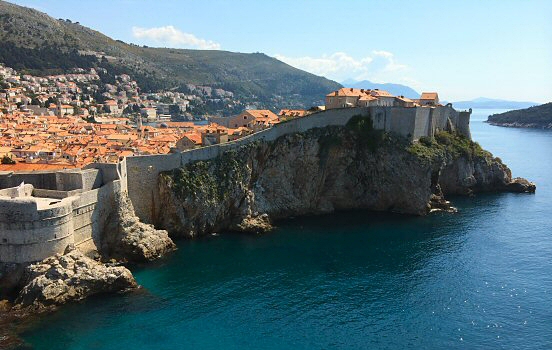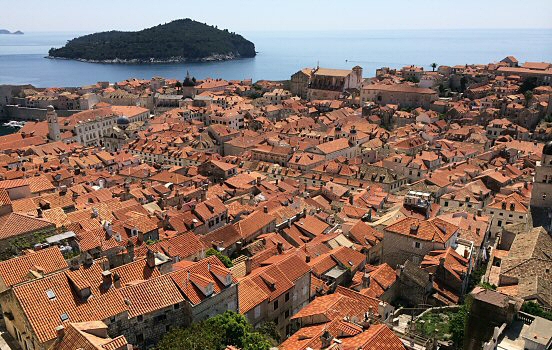There’s something about old stones. The ones that have soaked up blood, sweat, saltwater and centuries of bad decisions. The walls of Dubrovnik are made of those kinds of stones. Towering slabs of limestone wrapped around a city that’s taken more hits than most, and somehow still manages to look like a postcard.
The massive stone walls from the 16th century are best viewed from Fort Lovrijenac, where the 16th century walls are seen as a dramatic frontier towards the Adriatic Sea. Cannon ports stare blankly out to sea like old men who’ve seen too much.
 The walled city of Dubrovnik, as seen from Fort Lovrijenac.
The walled city of Dubrovnik, as seen from Fort Lovrijenac.
As soon as I enter the city through the Pile Gate, it become obvious that this is a magical place. I pass the Onofrio’s fountain from 1438 and stroll along the main street, Placa Stradun, on worn limestone pavement. I can feel the history in the heat bouncing off the stones.
I sit down in the shade on the steps of St. Blaise Church, in front of the Orlando Column at Luza Square. A band is playing Shostakovich beneath the arches of Sponza Palace and children are chasing pigeons.
If you brought enough sunscreen and have a few espressos running through the system, scale the walls for an unforgettable lap around the city. Some of the roof tiles have a brighter orange hue than the rest, since they were rebuilt after damage from the war.
 View from Minceta Tower.
View from Minceta Tower.
Even though the walls may have been impenetrable in the past, these days it’s an easy feat. I sneak through small passages and end up at Buza, a cozy bar perched on the tiny cliffs between the walls and the sea. The only thing more intoxicating than my cold drink is the view. The Adriatic sparkles like it’s trying to sell me something. The sea below me is pure and endless, the kind of blue that dares anyone to forget all the troubles of the world. But Dubrovnik remembers everything.
Related posts

Comments
No comments yet.
Leave a reply